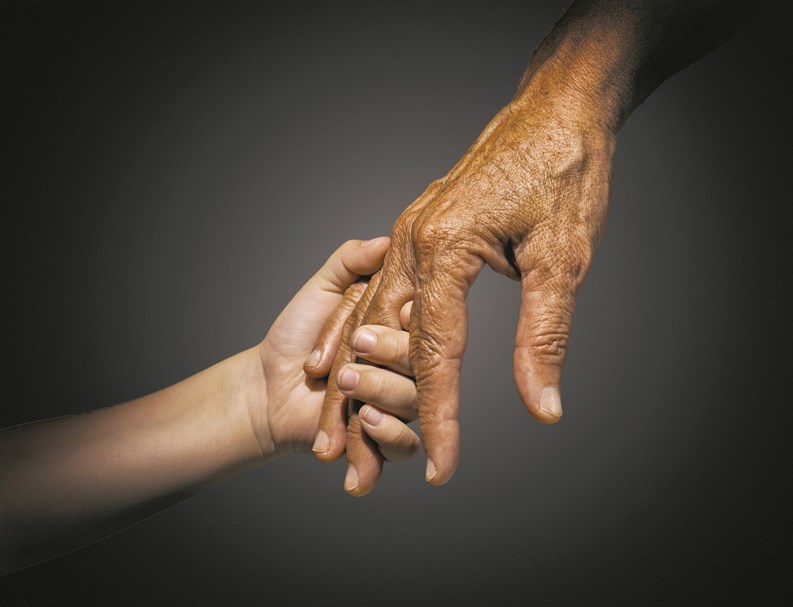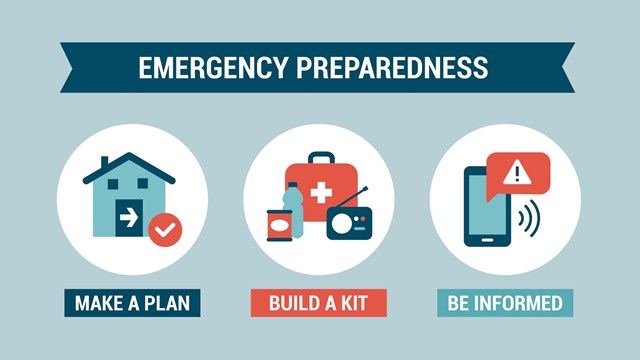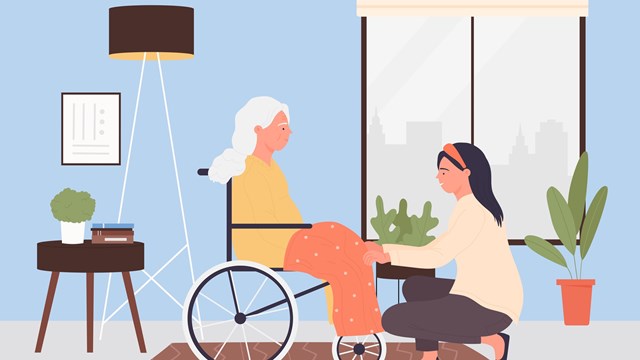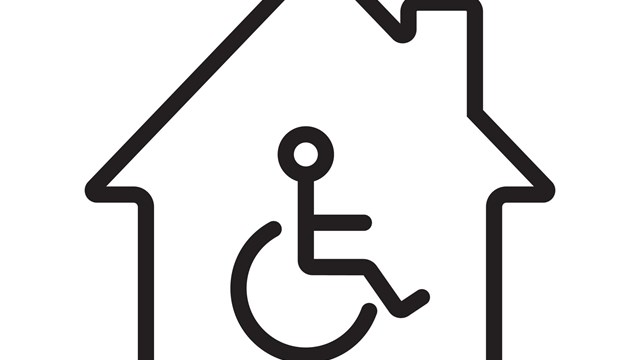Whether we’re talking day-to-day safety or emergency planning, most multifamily buildings and HOAs have something on the books to address both standard operating procedures and things like alerts and evacuations. And that’s great if you’re a relatively young, able-bodied resident— but what if you, or a loved one or neighbor, are elderly, or live with a mental or physical handicap, or are a kid with working parents who takes care of younger siblings? Who looks out for the safety of these folks, and makes sure they’re accounted for should a fire, power outage, or other emergency arise? How can boards, managing agents, and residents promote the safety and security of the more vulnerable members of their community, both day-to-day and in emergency situations? What happens during a major weather event? Or an electrical blackout, when power goes off for 24 hours or more?
First, let’s examine who the “vulnerable residents” really are. According to Allan B. Fraser, senior building code specialist at the National Fire Prevention Association, generally speaking, there are five categories of disability: lack of mobility, impaired vision, deafness or impaired hearing, speech disorders or inabilities, and cognitive disabilities. Each of these categories represents a different challenge when it comes to managing emergency situations.
Mobility
“Folks with mobility disabilities use one or more devices—things like canes, crutches, manually-operated wheelchairs, scooters—whatever they need to maneuver through their environment,” Fraser explains. Anyone who has difficulty walking—or indeed, is even extremely uncoordinated—is considered disabled in this way for our purposes. “A mobility disability can be an issue with any part of a body. Maybe you can’t open doors, or you can’t go down stairs, you can’t press keypads, whatever that might be.”
An important consideration here is that not all mobility issues are obvious to the eye. Fraser himself mentions this when he gives lectures on the subject. “I played hockey in high school and college and have had operations on both knees,” he says. “So if I had to run down 10 or 12 flights of stairs in a hotel, I couldn’t run. It might take me too long—and you can’t see that. I also happen to be Type II diabetic as I’ve gotten older, and what else you can’t see is I had heart surgery in 2007 and I’ve got two stents in my heart.” In his case—and there are many, many more like him—someone who looks perfectly able to walk down 70 flights of stairs may have extreme difficulty doing so.
Vision
“When you get into blindness or low vision, that includes people with partial or total vision loss,” Fraser says. “Some people with this disability can distinguish light and dark, sharply contrasting colors, and very large print, but can’t read small print and have trouble negotiating dimly lit spaces, or tolerating hard glare. Many people who are blind depend on their sense of touch and their sense of hearing to perceive their environment, what’s around them. There’s a risk that a person with a visual impairment could miss a visual cue such as a new obstruction that occurred during the event that could affect egress, so if something falls off a wall of a building or gets moved because of an earthquake, they’re not going to see it.”
It’s also important to keep in mind that a visually challenged resident will not be able to read certain handouts. “If you’re handing out information, it needs to be in multiple formats. So you can’t hand someone an 8 ½” x 11” piece of paper with 12-point font on it and say, ‘Well, now I gave this to all the residents.’ It needs to be available in large print, and probably in Braille.”
Hearing
This category includes the deaf, and also those with partial hearing. The latter often use a combination of lip-reading and hearing aids to understand spoken communication; both of these are often disrupted during emergencies.
“If you’ve got fire alarms going off, you’ve got sirens going off, it can seriously affect whatever hearing they have,” Fraser says. “People who are deaf or hard of hearing must rely on reading for information, and must be able to clearly see the face of the person who’s speaking if they’re lip-reading. Those who use sign language — and, by the way, American Sign Language is the third most common language in this country, behind English and Spanish!—so people who are hard of hearing or deaf may have difficulty understanding oral communication or receiving notifications by equipment that is exclusively auditory, such as telephones, fire alarms, or public distress systems.”
Speech and Cognitive Impairments
Obviously, a speech disability would not hamper a person’s ability to shimmy out a fire escape, or quickly descend ten flights of stairs. But a speech impairment is still relevant to this discussion.
“One example that’s very clear is telephones in an elevator,” Fraser says. “Say the elevator gets jammed, the person gets stuck, they pick up that phone and can’t tell anybody what’s going on. So that can be an issue.”
Cognitive impairments, Fraser explains, can be caused by a wide range of conditions, including but not limited to: developmental disabilities, MS, depression, alcoholism, Alzheimer’s, Parkinson’s, TBI, chronic fatigue, stroke, and some psychiatric conditions. “All result in the decrease in ability to process and understand information,” he says. “They impair a person from accessing building features due to the inability to process and understand the information necessary to use those features.”
Helping Out
So how to plan for everyone in your building—regardless of age or physical limitation?
“One of the things I say that should be done is emergency contacts,” says Susan Birenbaum, a life care specialist with Humanitude, a national organization that deals with issues for seniors. “Every building should have a list of emergency contacts for individuals — and on this list should be an indicator of whether people need emergency assistance. Whether there’s a need for a wheelchair, or if they have young children or older adults, or children with special needs. Everyone should be aware of this, and everyone should have this list.”
The New Jersey Office of Emergency Management (NJ-OEM), the governing body in times of crisis like Hurricane Sandy, suggests making a personal emergency plan. First, pick “buddies” who will help you, as you will help them, during a potential emergency. “Don’t go through an emergency alone. Ask at least two people to be in your emergency support network — family members, friends, neighbors, caregivers, coworkers, or members of community groups. Remember, you can help and provide comfort to each other in emergencies.”
Second, write down instructions. “Pre-written cards or text messages can help you share information with your support network or emergency responders during a stressful or uncomfortable situation. You may not have much time to get your message across,” according to OEM. “Phrases can include: I may have difficulty understanding what you are telling me. Please speak slowly and use simple language or pictures. I use a device to communicate. I am deaf and use American Sign Language. Please write down directions. I speak [insert language below].”
Also prudent, OEM says, is to pick a meeting place; pack a “go-bag” with important documents, medicines, water, and your passport; and know where you could stay both in and out of the city, in case of evacuation.
Boards and HOAs can take the lead in having emergency contact lists, making sure vulnerable residents are accounted for during an emergency, and so on. Residents, too, can help. If an HOA, building, or individual residents want to organize on their own for emergencies, one of the best things they can do is to join New Jersey Citizen Corps, a group of organizations that help people prepare for disasters. Citizen Corps programs in the state include CERT (Community Emergency Response Teams), the Medical Reserve Corps, the Neighborhood Watch Program, Volunteers in Public Service and the Fire Corps. Members of these teams are taught first aid, fire suppression and other basic emergency response techniques.
Each of these teams has a different mission. For example, the Medical Reserve Corps uses the talents of many volunteer doctors, nurses and pharmacists. CERT teams give support to first responders and provide assistance to victims and collect information at disaster sites. These often grow out of established groups such as neighborhood patrols, parent-teacher associations, auxiliary police, and so on. According to an NJ-OEM spokesperson, New Jersey actually has the second-highest number of CERT teams of any state in the country.
“The former chair of our disability committee,” Fraser recalls, “used a wheelchair more than half his life, and he always said, ‘All people, regardless of their circumstances, have some obligation to be prepared to take action during an emergency and to assume responsibility for their own safety.’ The right way is to go out and train people before a disaster occurs.”
Greg Olear is a freelance writer and novelist and a regular contributor to The New Jersey Cooperator.










Leave a Comment